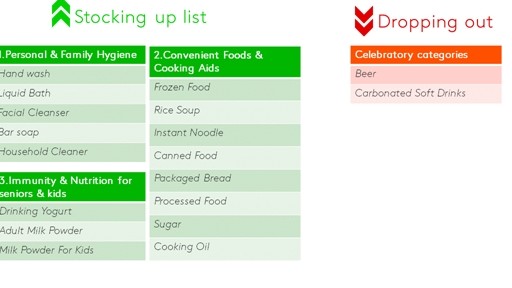7 steps to keep your business going amid the COVID-19 crisis
The rapidly escalating coronavirus outbreak is hitting businesses hard, with many being forced to scale back, or shutter entirely, in a bid to stifle the spread.
On March 23, 40% more U.S. businesses were closed compared to the same date in January, according to real-time analytics from scheduling site Homebase.
And business owners are not hopeful. More than three-quarters (76%) of small businesses say they are being negatively impacted by the public health crisis — up from 23% just 10 days ago — according to a new report from the National Federation of Independent Business (NFIB) released Monday.
But as businesses await more clarity on how long the mass lockdowns will last, and what local and national governments will do to support them, there are a number of things businesses can do now to ready themselves for reopening, according to risk management expert Nicholas Bahr.
Bahr, global practice leader in risk management at consultancy DuPont Sustainable Solutions, has spent 35 years helping businesses navigate geopolitical, climate and terror risks, including 9/11, and said "now is the time to turn risk into an opportunity." He outlined seven steps for doing so.
 |
7 steps for businesses:
1. Care for your people — Establish “robust and frequent” communications with employees to understand how they are being personally impacted by the virus and provide reassurances where possible about how you plan to support them.
2. Build a governance system — Create a governance system for decision-making, focusing on data rather than emotions. That may comprise three levels: The immediate, namely people and the day-to-day business; the medium-term, such as cash conservation and potential lay-offs; and the long-term, like the possibility of major economic impact.
3. Run risk assessments — Even if you have an existing risk assessment, it may no longer be suitable. Set up a new one focusing on the hygiene and safety measures needed to safeguard humans, finances, technology and operations during the outbreak.
4. Push external communications — “During a crisis, your biggest commodity is trust,” notes Bahr. Take time to reassure all customers, stakeholders and the general public that you are taking appropriate measures to fight the outbreak — and even contributing to a resolution. Social media can be a great platform for this, as well as a means of sourcing ideas from customers.
5. Assess supply chains — Figure out whether your customers are still customers and what they now require from you. Then speak to suppliers about what they can offer you, being wary that they may over-promise. If cash is tight, remember that not everything has to be done in cash: Get creative and think about how you can barter with other products and services.
6. Review operational risks — Assess all operational aspects of your business, such as kitchens or factories, and create a pre-start checklist to ensure you’re ready to go as soon as the socioeconomic landscape permits.
7. Use downtime productively — Make the most of any spare time to think about developing any new services and procedures you haven’t previously had time for. Galvanize your staff and help them to feel productive and valued by involving them in this process.
 | Novel coronavirus: what do we know so far? Countries around the world are stepping up efforts to tackle the new coronavirus that has killed thousands. |
 | Coronavirus Update in Vietnam, March 27: desipe the new case increasing, also new recoveries seen Although it was announced that new case increasing to 153 infections in Vietnam on 26 March, the country also saw a new happiness from three ... |
 | Vietnam facilitates foreigners extend visas amid COVID-19 outbreak Foreigners in Vietnam can make visa extension procedures at the Immigration Department under the Ministry of Public Security in line with regulations amid coronavirus fears, ... |
Recommended
 Handbook
Handbook
Vietnam Moves Up 8 Places In World Happiness Index
 Handbook
Handbook
Travelling Vietnam Through French Artist's Children Book
 Multimedia
Multimedia
Vietnamese Turmeric Fish among Best Asian Dishes: TasteAtlas
 Handbook
Handbook
From Lost to Found: German Tourist Thanks Vietnamese Police for Returning His Bag
 Handbook
Handbook
Prediction and Resolution for the Disasters of Humanity
 Handbook
Handbook
16 French Films To Be Shown For Free During Tet Holiday In Vietnam
 Handbook
Handbook
Unique Cultural and Religious Activities to Welcome Year of the Snake
 Handbook
Handbook





